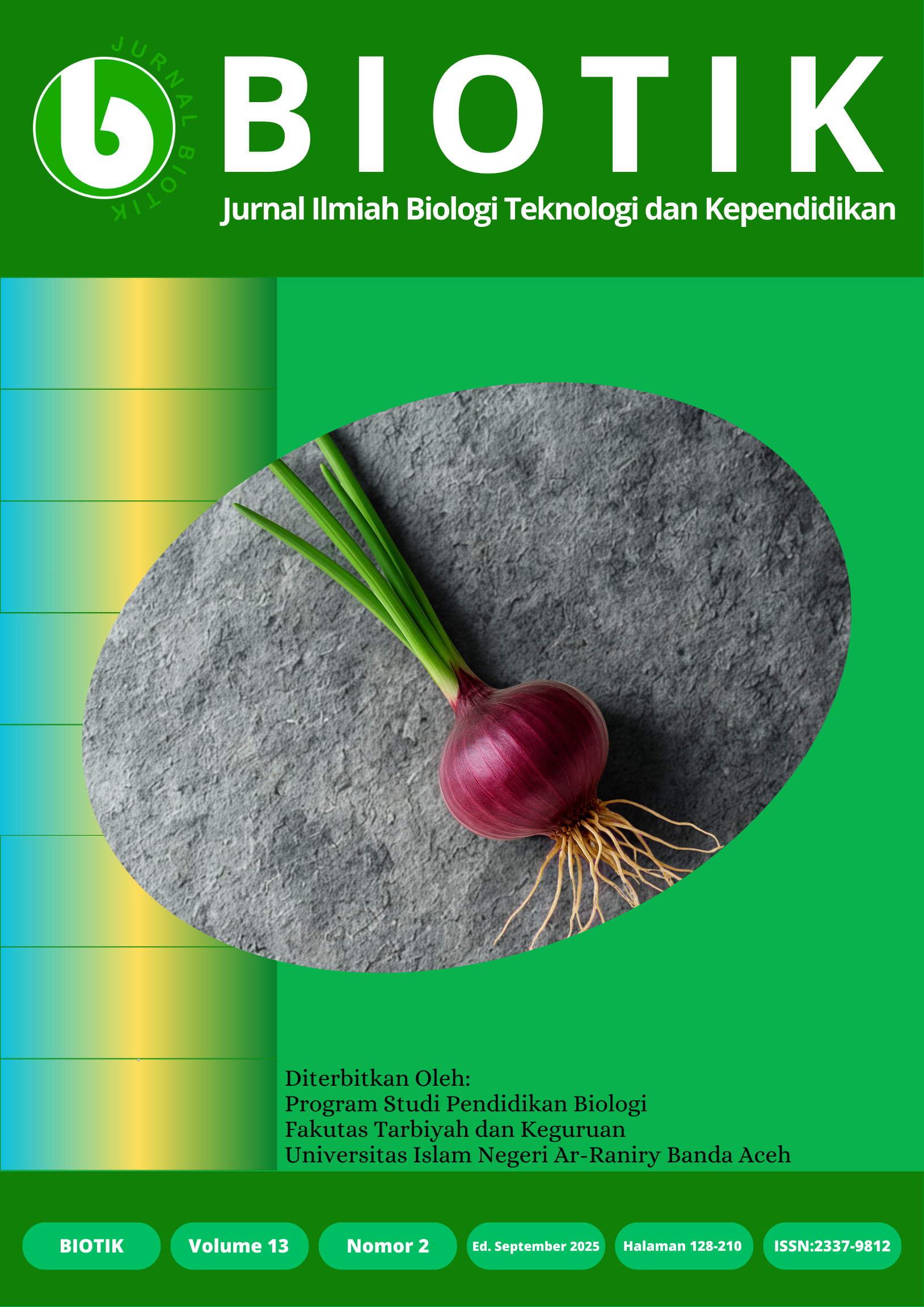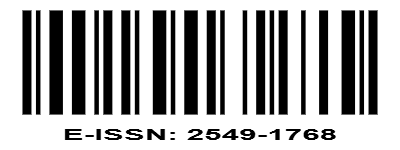Development of an Android-Based Electronic Module Using Website 2 APK with Islamic Values on Virus Material for Senior High School Students
DOI:
https://doi.org/10.22373/biotik.v13i2.31815Abstract
Abstract:
Innovations in education, including electronic teaching materials, enhance students' motivation and understanding, supported by technological advancements. However, the integration of technology in learning remains suboptimal, as observed in Biology education. The topic of viruses is considered difficult due to its abstract nature and complex scientific terminology, while instruction still relies heavily on textbooks with minimal use of technology. This study aims to develop an Android-based e-module on viruses, integrating Islamic values to facilitate students' understanding. The development follows the ADDIE model and is evaluated by experts before being tested with teachers and students. Validation results indicate a very high feasibility level (98% from subject matter experts, 99% from media experts, and 92% from Islamic values experts). The trial results show high approval ratings from teachers (93.7%) and students (90.1%), demonstrating that the e-module is highly effective in supporting engaging, flexible, and meaningful learning, applicable for both in-person and online education.
Keyword: Electronic module 1; Android 2; virus 3; Islamic Values 4.
Downloads
Downloads
Published
Issue
Section
License
Copyright (c) 2025 Anggi Aprilia, Agus Sujarwanta, Hening Widowati

This work is licensed under a Creative Commons Attribution-ShareAlike 4.0 International License.
Authors who publish with BIOTIK: Jurnal Ilmiah Biologi Teknologi dan Kependidikan agree to the following terms:
- Authors retain copyright and grant the journal right of first publication with the work simultaneously licensed under a Creative Commons Attribution License that allows others to share the work with an acknowledgement of the work's authorship and initial publication in this journal.
- Authors are able to enter into separate, additional contractual arrangements for the non-exclusive distribution of the journal's published version of the work (e.g., post it to an institutional repository or publish it in a book), with an acknowledgement of its initial publication in this journal.
- Authors are permitted and encouraged to post their work online (e.g., in institutional repositories or on their website) prior to and during the submission process, as it can lead to productive exchanges, as well as earlier and greater citation of published work.












